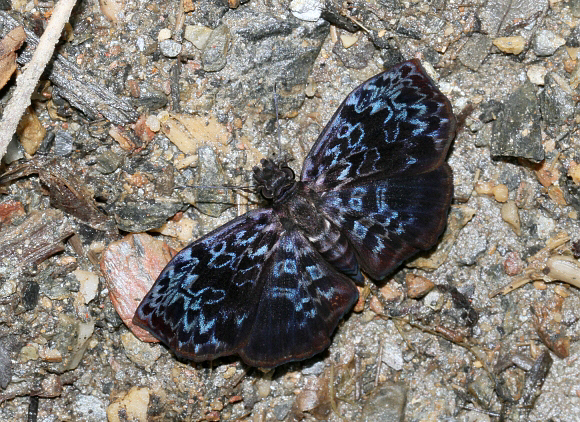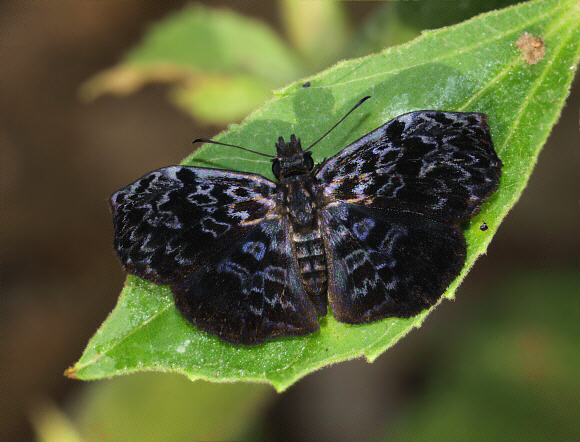
Introduction
The Pyrginae, popularly known as Flats or Spreadwings, are a cosmopolitan subfamily distributed across temperate and tropical habitats throughout the world. In the Americas there are 990 species.
The genus Cycloglypha comprises of 6 known species, all confined to the neotropics. They are small butterflies averaging about 4 cms in wingspan.
The name Cycloglypha or ‘circular symbols’ refers to the iridescent oval markings which can appear either purplish or blue according to the angle of view. Butterflies in the genera Cycloglypha, Helias, Camptopleura, Ebrietas and Gorgythion share the habit of folding down the apex of their forewings when basking, and are thus collectively known as ‘bent skippers’.
Cycloglypha thrasibulus is a common species distributed from Mexico to Peru and across Amazonia.

Habitats
This is a forest edge species, found along roadsides, riverbanks and wide forest trails at altitudes between sea level and about 1000 meters.
Lifecycle
In common with other Pyrgine butterflies Cycloglypha lay their eggs singly on either the upperside or underside of leaves. I have no data regarding the larvae or pupae.
Adult behaviour
Males visit sandbanks and roadsides to imbibe mineralised moisture, and often form mud-puddling aggregations with Camptopleura, Chiomara, Ebrietas and Antigonus species. They have a rapid flight, zig-zagging and flying about in tight circles just above the surface of the ground.
Females are seen less often but can occasionally be seen flying around bushes at forest edge habitats.

